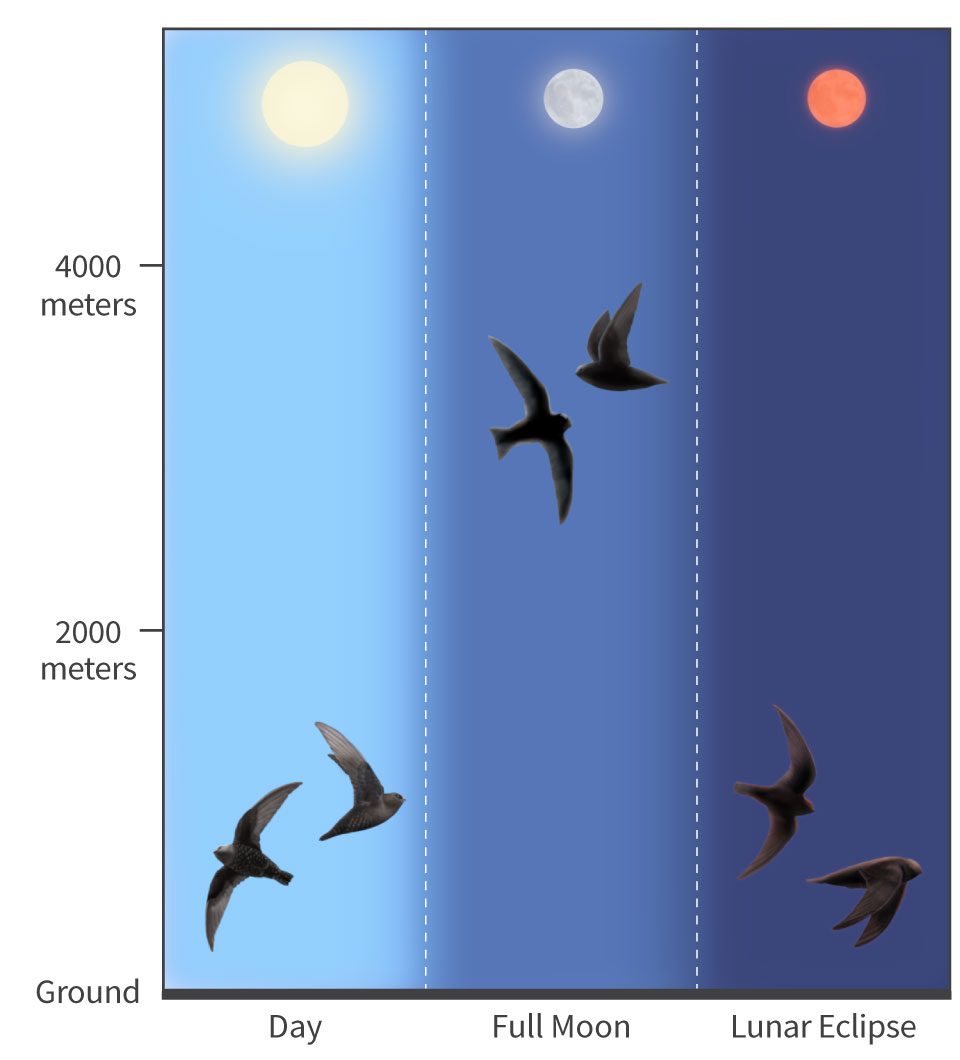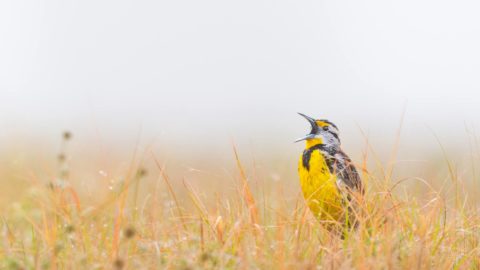Black Swifts Fly High to Forage During the Full Moon
June 13, 2022
From the Summer 2022 issue of Living Bird magazine. Subscribe now.
When Billie Holiday sang What a Little Moonlight Can Do, she might as well have been describing the foraging patterns of Black Swifts, because recent research published in the journal Current Biology shows that moonbeams peepin’ through can affect how high the swifts swoop in their insect-eating nighttime runs.
For the research, scientists equipped Black Swifts with data loggers to track their migrations from Colorado’s Rocky Mountains to Brazil’s Amazon basin and back. Over the course of that year, the researchers noticed that the swifts shifted their nocturnal foraging in relation to the amount of moonlight. During a full moon, the sleek black birds soared more than 13,000 feet in elevation (or more than 2 miles high). But during a full lunar eclipse in South America on the night of January 20, 2019, the swifts descended to around 3,000 feet in altitude.
“Our results are very exciting, and reminiscent of the vertical movements in relation to moonlight found in, for example, zooplankton in the oceans,” says Anders Hedenström, lead author and biologist at Lund University in Sweden.
The data loggers also showed that these amazing swifts stay almost entirely airborne during their spring and fall migratory journeys and while overwintering in South America, as the birds were in the air more than 99% of the time during that eight-month nonbreeding period.
Reference
Hedenström, A., R. A. Sparks, G. Norevik, C. Woolley, G. J. Levandoski, and S. Åkesson (2022). Moonlight drives nocturnal vertical flight dynamics in black swifts. Current Biology 32:1875–1881.E3. DOI: https://doi.org/10.1016/j.cub.2022.03.006

All About Birds
is a free resource
Available for everyone,
funded by donors like you
American Kestrel by Blair Dudeck / Macaulay Library


